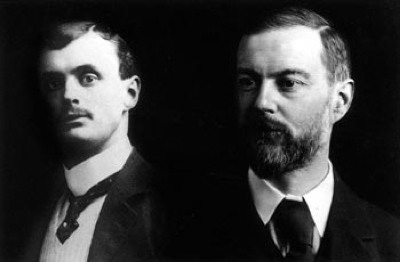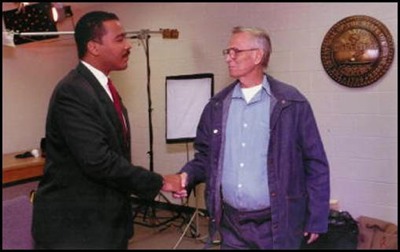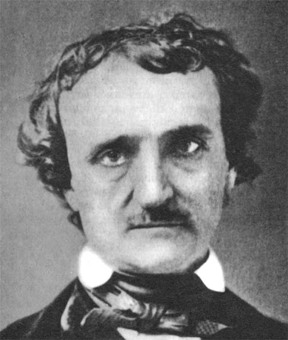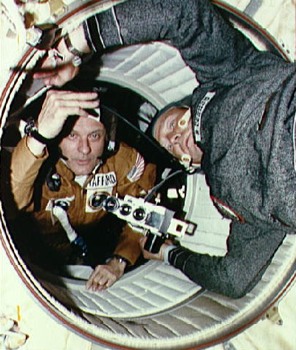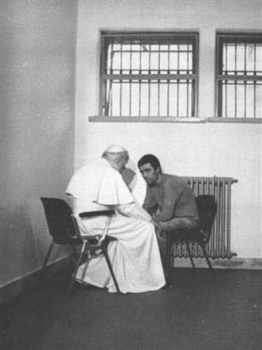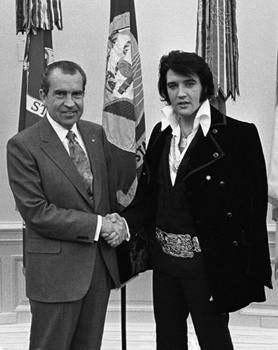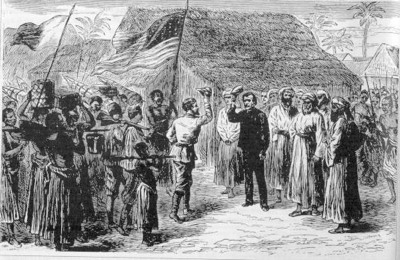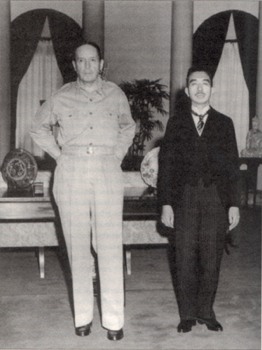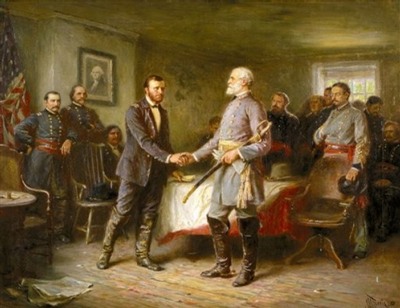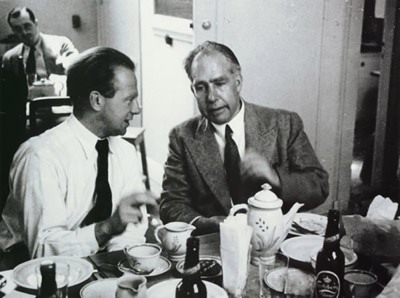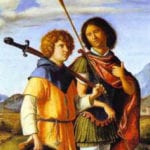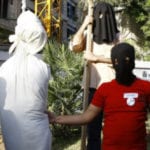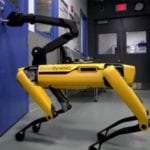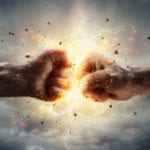 Mysteries
Mysteries  Mysteries
Mysteries  History
History 10 Surprising Stories About the Texas Rangers
 Humans
Humans 10 Philosophers Who Were Driven Mad by Their Own Theories
 Miscellaneous
Miscellaneous 10 Video-Game-Worthy Weapons and Armors from History
 Weird Stuff
Weird Stuff 10 Psychics Who Accurately Predicted Wartime Events
 The Arts
The Arts 10 Pieces of Art Inspired by a Broken Heart
 Health
Health 10 Science Fiction-Sounding New Medical Treatments
 History
History 10 Surprising Facts About the Father of Submarine Warfare
 Space
Space Ten Astonishing New Insights into Alien Worlds
 Weird Stuff
Weird Stuff 10 Bizarre Summer Solstice Rituals Still Practiced Today
 Mysteries
Mysteries Top 10 Haunting Facts About the Ghost Ship MV Alta
 History
History 10 Surprising Stories About the Texas Rangers
 Humans
Humans 10 Philosophers Who Were Driven Mad by Their Own Theories
Who's Behind Listverse?

Jamie Frater
Head Editor
Jamie founded Listverse due to an insatiable desire to share fascinating, obscure, and bizarre facts. He has been a guest speaker on numerous national radio and television stations and is a five time published author.
More About Us Miscellaneous
Miscellaneous 10 Video-Game-Worthy Weapons and Armors from History
 Weird Stuff
Weird Stuff 10 Psychics Who Accurately Predicted Wartime Events
 The Arts
The Arts 10 Pieces of Art Inspired by a Broken Heart
 Health
Health 10 Science Fiction-Sounding New Medical Treatments
 History
History 10 Surprising Facts About the Father of Submarine Warfare
 Space
Space Ten Astonishing New Insights into Alien Worlds
 Weird Stuff
Weird Stuff 10 Bizarre Summer Solstice Rituals Still Practiced Today
10 Fascinating Meetings in Modern History
If you work in the corporate world and are attending a meeting you might have easily prepared for it by watching paint dry or grass grow. However there are many meetings in recent history that I would have loved to attend or at least be a fly on the wall starting with this list of ten.
When Fredrick Henry Royce purchased his first two-cylinder car (a French Decauville) he was very dissatisfied with its performance. He decided to build a car of his own by “taking an existing part and making it better and eventually started successfully building his own two-cylinder, 10-horsepower cars that were known for their silent and vibration-free ride. The automobiles soon caught the attention Charles Stewart Rolls who at the time operated a London dealership for French Panhard automobiles. Eventually a meeting was arranged between Rolls and Royce at the Midland Hotel in Manchester England on May of 1904. During the meeting Rolls was impressed by Royce’s determination and creativity and discussed the possibility of combining their own expertise and dedication with the latest technologies. The two men later agreed to establish an automobile partnership.
Interesting Fact: In 1907 under the supervision of Charles Rolls, the company began to manufacture small aircraft engines. Tragically three years later Rolls was killed when his Wright biplane crashed. He was the first Briton to be killed in an aeronautical accident, and the eleventh internationally. As a symbol of mourning the “RR” logo on the radiator plate was changed from red to black.
This awkward meeting took place in 1997 in a Tennessee state prison hospital between Dexter King, son of the late Rev. Martin Luther King Jr. and James Earl Ray (the convicted assassin of his father) It was the first between the two men and also marked the first time the King family had publicly backed Ray’s claim of innocence. Dexter King asked James Earl Ray, “Did you kill my father?” Ray answered: “No, I didn’t.” Dexter King responded, “I believe you, and my family believes you.” Ray was taken to the meeting room in a wheelchair, and at times he mumbled and rambled. Dexter King who was 36 at the time sat just three feet away and listened patiently to Ray who at the time was dying of liver disease.
Interesting Fact: Ray told his wife, who thought he was innocent, that he had killed King and threatened to kill her. In discussing the events surrounding King’s death, Ray admitted his guilt with the statement: “Yeah, I killed him. But what if I did; I never got a trial.” Ray died in prison a year later in 1998 at the age of 70.
These two great writers met in March of 1842 when Charles Dickens visited Philadelphia to lecture and also talk about the importance of international copyright laws. Poe sent him a letter requesting a meeting along with a two-volume collection of his short stories. Dickens responded to his letter and wrote “My Dear Sir, I shall be very glad to see you whenever you will do me the favor to call. I think I am more likely to be in the way between half past eleven and twelve than any other time.” Dickens was just 30 years old and had already published Pickwick Papers, Nicholas Nickleby, and The Old Curiosity Shop. The relatively little-known Edgar Allan Poe was 32 and had published Tamerlane and Other Poems. The two met twice in Dickens’s hotel room. The meetings were impersonal as they discussed contemporary English and American writers. Poe then came to the point and asked Dickens if he could help publish his Tales of the Grotesque and Arabesque in England. Dickens promised to try. Nine months later Dickens wrote Poe admitting failure to get his work published.
Interesting Fact: Six years earlier Poe had married his 13-year old first cousin Virginia Clemm and was living with her and her mother (Poe’s Aunt/ mother in-law) Maria Clemm. Virginia Clemm died of tuberculosis when she was just 24. Because of his wife’s death Poe became despondent and turned to drink to cope. When Dickens returned to America for his second tour, Poe was already dead. Dickens learned that Maria Clemm was ill and living on charity. Dickens visited her, pressed some money into her hand, and later from England contributed $1,000 for her keep.
On July 15th 1975 two men aboard the Soyuz (from the Soviet space program) and three men aboard the last Apollo mission (from the US space program) were launched within seven and a half hours of each other The Astronauts & Cosmonauts were to perform some experiments but the primary purpose of the mission was symbolic and was an attempt to ease the tensions between the two superpowers. On July 17, Stafford and Leonov met and exchanged the first international handshake in space through the open hatch of the Soyuz. The spacecrafts remained linked for 44 hours, long enough for the men to pay visits to each other’s ships,eat together and converse in each other’s languages. The Soviets remained in space for five days, the Americans for nine days.
Interesting Fact: The Americans and Soviets exchanged flags and gifts including tree seeds which were later planted in the two countries.
In 1981 Mehmet Ali A?ca from Turkey and a known member of the Turkish ultra-nationalist Grey Wolves organization shot and wounded Pope John Paul II. After the assassination attempt the Pope asked people to “pray for my brother (A?ca) whom I have sincerely forgiven.” In 1983, the Pope and A?ca met and spoke privately at a prison in Rome Italy where he was being held. A?ca eventually developed a friendship with the pontiff. The Pope was also in touch with A?ca’s family over the years, meeting his mother in 1987 and his brother a decade later.
Interesting Fact: When Pope John Paul II died in 2005, A?ca’s brother Adnan said that his entire family was grieving and that the Pope had been a great friend to them. Also: A?ca wanted to visit the Pope’s funeral however Turkish authorities rejected his request to leave prison to attend.
The fact that a famous entertainer would meet the President of the United States is not unusual. What makes this story so fascinating is the events leading up to the meeting. Without an invitation or any previous communication Presley flew to Washington D.C with a couple of his bodyguards to see the President. During the flight Presley wrote Nixon a six-page handwritten letter on American Airlines stationary requesting to meet with him and suggested that he be made a “Federal Agent-at-Large”. Presley arrived at the White House gate on the morning of December 21st 1970 and handed his letter to the guards then waited. Nixon’s aids advised the President to meet with the rock star and scheduled a meeting for that afternoon. During their meeting in the Oval Office Presley said he wanted to be helpful, and restore some respect for the flag which he thought was being lost because of the drug culture and anti American radical groups. At the conclusion of the meeting, Presley told the President how much he supported him, and then in a spontaneous gesture, put his left arm around the President and hugged him.
Interesting Fact: Of all the requests made each year to the National Archives for reproductions of photographs and documents, the one item that is requested more than any (even more than the Bill of Rights or the Constitution) is the photograph of Elvis Presley and Richard M. Nixon shaking hands during this famous meeting. You can read Presley’s Transcript of his 6 page letter here.
Henry Morton Stanley was a British journalist and was well known for his exploration of Africa. The New York Herald hired him as a reporter to find the Scottish missionary and explorer David Livingstone, who was known to be in Africa but had not been heard from for 3 years. In March of 1871 Stanley outfitted an expedition with the best of everything including 200 porters. The 700-mile expedition through the tropical forest was extremely difficult to say the least with many of his carriers deserting and some others dying from tropical diseases. Stanley found Livingstone on November 10, 1871, in Ujiji near Lake Tanganyika in present-day Tanzania, and greeted him with the now famous, “Dr. Livingstone, I presume’.
Interesting Fact: Here are the exact words written by Stanley when he finally met up with Livingstone: “As I advanced slowly toward him I noticed he was pale, looked wearied, had a gray beard, wore a bluish cap with a faded gold braid round it, had on a red-sleeved waistcoat, and a pair of gray tweed trousers. I would have run to him, only I was a coward in the presence of such a mob – would have embraced him, only, he being an Englishman, I did not know how he would receive me. So I did what cowardice and false pride suggested was the best thing – walked deliberately to him, took off my hat, and said: ‘Dr. Livingstone, I presume?’ “Yes”, said he, with a kind smile, lifting his cap slightly.
The above picture was taken on September 27, 1945 at the US Embassy in Tokyo just weeks after Japan formally surrendered. According to Mc Arthur’s he was expecting that Hirohito might deny any responsibility to war crimes that were committed by the Japanese but instead he said this: “I come to you, General MacArthur, to offer myself to the judgment of the powers you represent as the one to bear sole responsibility for every political and military decision made and action taken by my people in the conduct of war.” There had been considerable outcry from some of the Allies, notably the Russians and the British, to punish Hirohito for war crimes but American authorities, including MacArthur, decided that it would be easier to stabilize and reform Japan if they let him remain as ruler but not a Shinto deity.
Interesting Fact: Hirohito later became a respected marine biologist and wrote a number of books on the subject. After Hirohito died in 1989 because of his interest in science and in modernizing his country he was reported to have been buried with his microscope and a Mickey Mouse watch.
In 1865 Robert E. Lee realized there was little choice but to surrender his Army to General Grant. This would be the beginning of the end of the bloodiest conflict in United States history. After communicating through notes, Grant and Lee agreed to meet at the Appomattox Court House in Virginia. When Lee arrived General Grant began the conversation and talked about how they met before while serving in Mexico. The meeting lasted approximately two and one-half hours. Lee asked Grant to commit the terms to paper. Grant then wrote up the terms ending with the sentence ‘officers appointed by me to receive them. After reviewing the terms Lee informed Grant that the Cavalry men and Artillery men in the Confederate Army owned their horses and asked that they keep them. Grant agreed and Lee wrote a letter formally accepting the surrender. General Lee shook hands with General Grant and bowed to the other officers and left the room. Before Lee left, General Grant stepped outside and saluted Lee by raising his hat. Lee then raised his hat respectfully and rode off to break the sad news to his men.
Interesting Fact: When Lee mentioned to Grant that his men had been without rations for several days, Grant arranged for 25,000 rations to be sent to the hungry Confederates.
This fascinating meeting was between good friends who were also two of the greatest physicists of their time. To this day this meeting has created great controversy and speculation as to what was really said and what was really behind the words that were exchanged that day. The meeting has also inspired a play called Copenhagen.
Heisenberg was from Germany and met Niels Bohr in 1922 when he was his physics teacher. Bohr was a well known physicist from Denmark and was half Jewish. Heisenberg immediately made Bohr aware of his talents in class and a productive collaboration and friendship developed between the two men for many years. In 1939, shortly after the discovery of nuclear fission, the German nuclear energy project had begun. Heisenberg became one of the principal scientists leading research and development in the project. The relationship became strained partly because Bohr, with his partially-Jewish heritage, remained in occupied Denmark, while Heisenberg remained in Germany. In 1941, Heisenberg travelled to Copenhagen to meet Bohr. During the now famous meeting it is speculated that Heisenberg revealed the atomic bomb program’s existence to Bohr and the meeting along with their friendship ended abruptly.
Interesting Fact: In February 2002, a letter written by Bohr to Heisenberg in 1957 was discovered but was never sent to Heisenberg. Bohr relates in the letter that Heisenberg, in their 1941 meeting did not express any moral problems with the bomb making project and that Heisenberg had spent the past two years working almost exclusively on it and that he was convinced that the atomic bomb would eventually decide the war. It has also been speculated that Heisenberg had moral qualms and tried to slow down the project. Heisenberg himself attempted to paint this picture after the war. For those who want to learn more about this amazing story can watch a short BBC documentary here.
